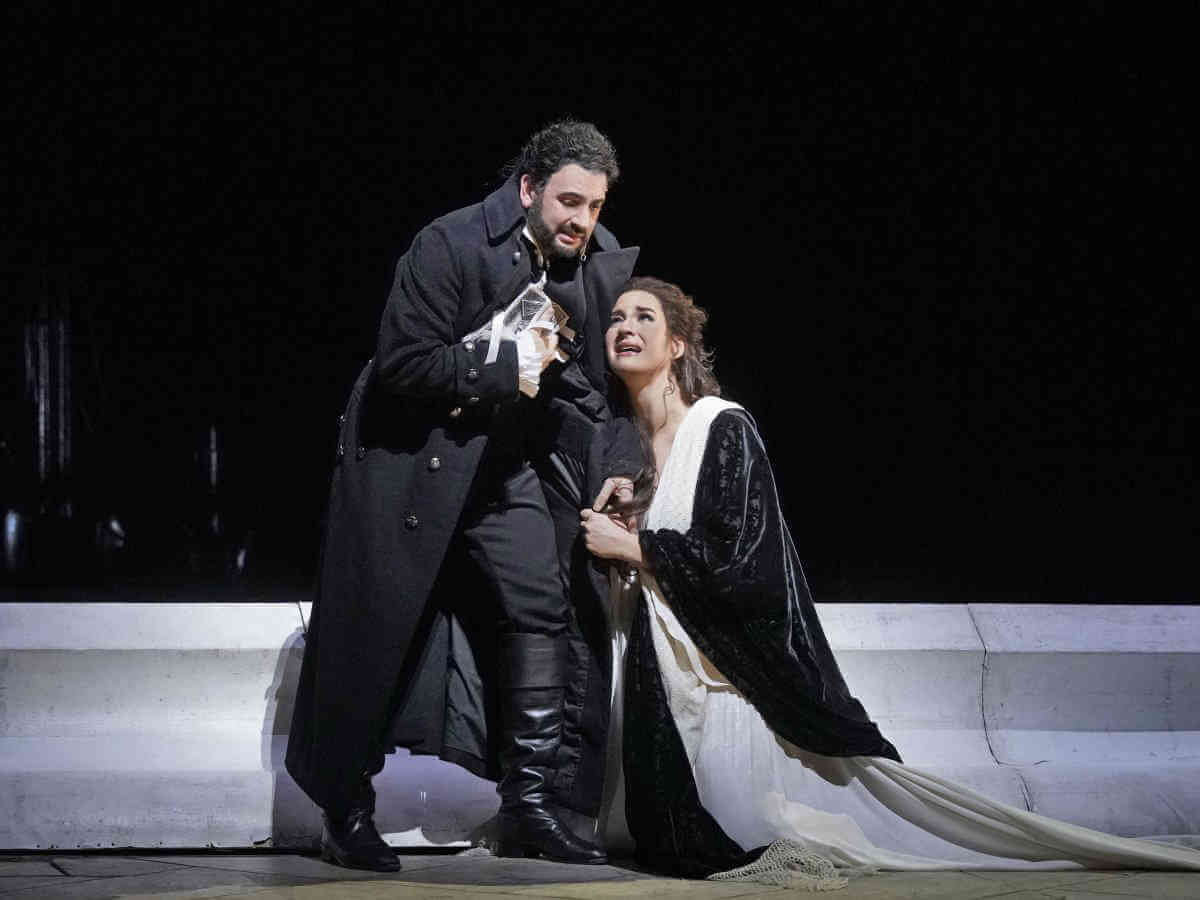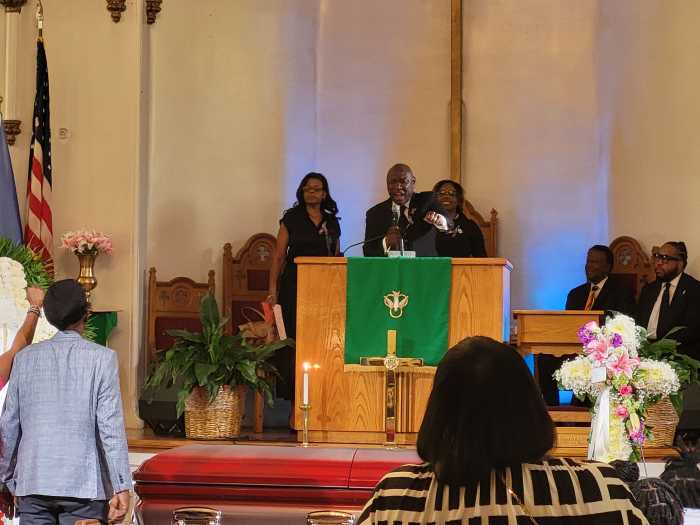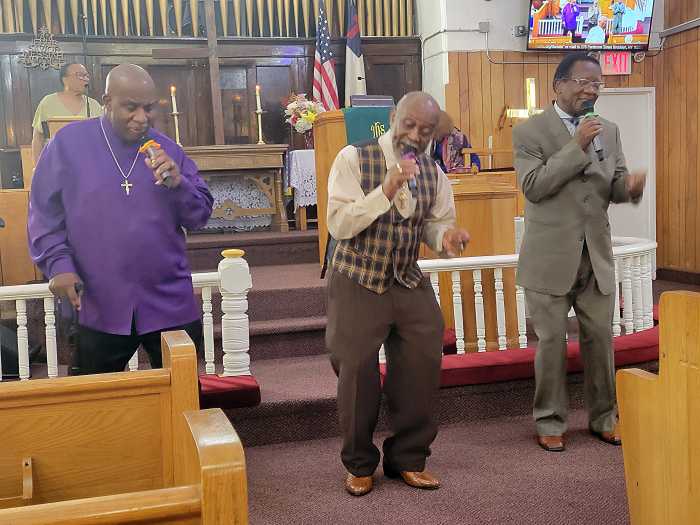Fatal passions are the stuff of opera — and this fall season was replete with doomed love stories. These sad stories of dead lovers featured several local debuts of much lauded international talents.
We will start with Tchaikovsky’s dark tale of fatal obsession: “The Queen of Spades.” In Pushkin’s original story, the obsessive antihero Hermann’s fixation on the Old Countess’ secret formula for winning at cards lands him in an insane asylum. His discarded lover Lisa ends up palmed off as the wife of a nonentity. In Tchaikovsky’s operatic adaptation (to a libretto by his brother Modest), both Lisa and Hermann end up suicides.
The Metropolitan Opera’s current revival featured a large number of role debuts including the Met debut of the rising young Norwegian heroic soprano Lise Davidsen. Davidsen recently made her Bayreuth debut and just released a solo CD of Wagner and Strauss arias on the Decca label. Davidsen lived up to all the advance hype but was one bright light among equal luminaries in a consistently strongly cast.
Elijah Moshinsky’s 1995 production remains starkly effective with its use of light and shade and slightly skewed perspectives in formal landscapes and architecture. However, several singers would have benefited from more precise physical stage business and several effects were blurred over. Lisa’s suicide in the Winter Canal looked like a hysterical rush offstage before the stage panels closed in on her — originally, she waded into the water as the lights dimmed around her.
The opera is driven by the male protagonist, Hermann: Yusif Eyvazov (a late replacement for Aleksandrs Antonenko) delivered a game-changing tour de force performance. The distinctly reedy, nasal timbre of Eyvazov’s tenor sounds odd in Italian opera but suits Russian repertory marvelously (his open ringing high notes work in any tenor role no matter the repertory). The newly slimmed down Azerbaijani tenor’s dark looks and intense projection of Hermann’s obsession and passions made him the star of the evening. This is not a first-rate voice but with hard work Eyvazov has earned his place in the spotlight outside of the shadow of his superstar wife, Anna Netrebko.
The tall and lovely Davidsen has a darkly luminous middle register full of Russian melancholy. But her upper register is pure and her seamless tone ascends and expands without tonal glare, unsteadiness or harshness. Davidsen is currently more a vocal than a dramatic phenomenon but she has an appealingly natural stage presence and engages the listener. Her upcoming Met engagements in operas by Beethoven, Wagner, and Strauss are something to anticipate with pleasure.
As the mysterious Old Countess, Larissa Diadkova was formidable vocally and dramatically — her robust contralto filled out lines that have been croaked by some of her predecessors. Physically she needed to suggest more decrepitude and frailty. Alexey Markov was a virile and dashing Count Tomsky who dealt a winning hand with his Act I aria about the three winning cards. Elena Maximova was an adroit Pauline revealing a more consistently focused contralto tone and charming stage manner. As Lisa’s jilted fiancé Prince Yeletsky, baritone Igor Golovatenko (in his Met debut) initially seemed sonorous but stolid but his showstopper aria revealed long-breathed legato lines and elegant phrasing.
Smaller roles were given prominence by such bright talents as Leah Hawkins, Paul Groves, and Jill Grove. The third debutant was the St. Petersburg born conductor Vasily Petrenko, who led Tchaikovsky’s score with a brilliant clarity that intensified the dark passions and brooding orchestral colors inherent in this score. Try to catch one of the remaining performances before December 21 as this is the Met at its best.
Wagner interprets the fatal passion of his titular lovers in “Tristan und Isolde” through binary concepts opposed against each other: love-death, night-day, etc. Love can only end in death as day ends in night. The outside world of duty exists during the day but romantic passions can only thrive at night.

The National Symphony Orchestra brought Act II of “Tristan und Isolde” in concert to Geffen Hall on November 17 as part of the White Lights Festival. This concert reading gave us our first glimpse of Christine Goerke’s Isolde, a role that she is preparing for international (and possibly local?) engagements. Goerke sang with great musical, textual, and dramatic detail but somehow the role of Isolde eluded her — the music never quite settled into her voice. She had all the notes (including the two tricky high C’s at Tristan’s entrance) but the tone sounded hollow and unsettled with passing intonation problems. I was hoping for something darkly sensuous with a mezzo coloration. But Goerke never managed that kind of warm legato phrasing as the voice kept going in and out.
In contrast, Bayreuth veteran Stephen Gould is an experienced Tristan who despite a somewhat mature and leathery tone carried off the role with authority and focused power. Mezzo Ekaterina Gubanova repeated her anguished Brangäne (last seen in the Met’s new production two seasons ago) with firm dramatic and vocal projection. Bass Günther Groissböck showed the advantages of casting a native German speaker as King Marke — his long monologue imparted the shock of betrayed honor and trust rather than self-pity. His baritonal bass with its rather grainy texture evoked affronted pride, anger and disillusion.
Gianandrea Noseda’s conducting hung fire where it should have rustled with anticipation or surged with passion. There were moments of sloppy ensemble. The most interesting interpretation came in what is the dullest section of the act: the once routinely cut but structurally indispensable “Tag” (“Day”) section of the great love duet. This was far from a perfect performance of this demanding act but it imparted enough Wagnerian passion to excite an audience of opera aficionados to enthusiastic cheering.
From the dawn of opera came another tale of love and death — John Blow’s “Venus and Adonis” (1683) as presented by Opera Lafayette on November 22 at El Museo del Barrio. This three-act “masque” was created for the court of Charles II of England and featured his mistress as Venus and their illegitimate daughter as Cupid. It is considered one of the earliest English operas and shows French influence with its overture and dance interludes.
French-based lutenist Thomas Dunford as guest music director led the consort, and baroque dancer/ choreographer Julia Bengtsson handled both the choreography and stage direction (both rather modest and limited in scope). Since Blow’s chamber opera is only an hour long, several songs by Purcell and Dowland were added as a prologue to fill out an evening’s entertainment.
These songs showcased the collaboration between Dunford on lute and 26-year old mezzo-soprano Lea Desandre, a graduate of Les Arts Florissants’ Jardin des Voix young artist training program. Dunford seemed to commune with his lute and breathed with the singers, inspired by and inspiring their musical phrasing. Countertenor Daniel Moody charmed in the Purcell “Strike the Viol” and performed several small parts in the Blow opera.
Desandre’s lithe mezzo-soprano has a flicker vibrato and a simultaneously cool and warm timbre. Model thin and alluringly gamine in a sleeveless red sheath gown, she made a surprisingly vulnerable goddess of love in Blow’s opera. Desandre was matched in physical and vocal attractiveness by the tall and handsome Adonis of bass-baritone Douglas Williams, vocally and visually suave as her doomed lover. The very adult and unmistakably female Sarah Shafer sang a pristine Cupid with gleaming soprano tone — a child performer would have been more dramatically apt but would not have served the music as well. The vocal ensemble was full of striking voices and personalities — besides Moody, Véronique Filloux, Jonathan Woody, and Patrick Kilbride shone in brief solo opportunities.
The instrumental consort (which included Opera Lafayette artistic director Ryan Brown on violin) was placed stage left while the action took place stage right. After some initial sour tuning, they became a lively ensemble. The only scenery was one overstuffed red love seat stage right. Julia Bengtsson and Matthew Ting provided convincingly authentic period dances.
Anne Kingsmill Finch’s libretto balances cynicism and satire of the morals of the court with genuine heartbreak. Blow’s score has vivacity and charm and surprising dramatic fiber — it should be produced as often as Purcell’s “Dido and Aeneas.” As always with Opera Lafayette, celebrating its 25th season in existence, we were grateful to have another dark, forgotten corner of musical history illuminated with such musicianship and loving preparation.






























